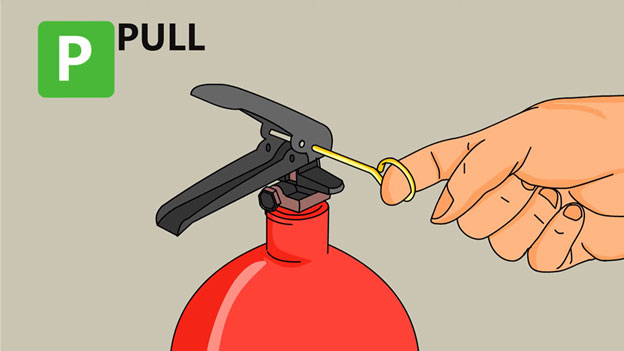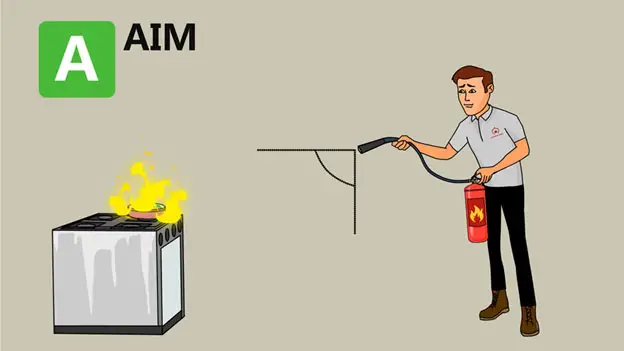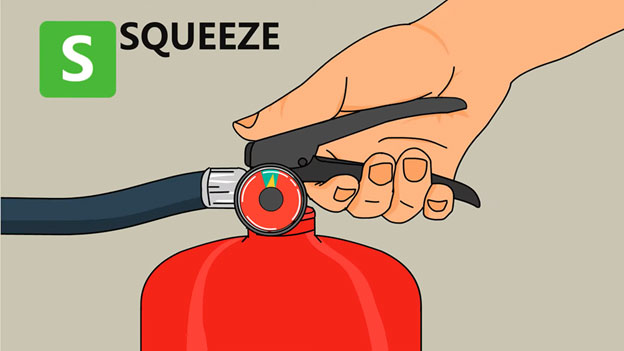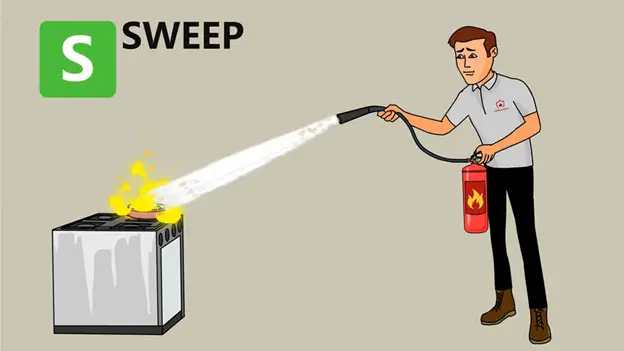The PASS acronym stands for Pull, Aim, Squeeze, and Sweep. This abbreviation is a useful way to remember the steps for using a fire extinguisher safely in an emergency.
PASS Fire Acronym for Extinguishers
P: Pull the Pin
Pull the pin out from the handle on top of the extinguisher to release the locking mechanism and allow the extinguisher to discharge.

A: Aim at the Base of the Fire
Aim the nozzle of the extinguisher at the base of the fire, where the fuel source is located. Do not target the flames directly. By extinguishing the fuel, you can prevent the flames from rekindling. Stand around 6 to 10 feet away to ensure your safety and to allow enough distance to reach the base of the fire.

S: Squeeze the Lever
Squeeze the lever to discharge the extinguishing agent. Make sure to squeeze the trigger evenly to maximize the extinguisher’s effectiveness.

S: Sweep from Side to Side
Sweep from side to side with the nozzle in a controlled motion to cover the entire area of the fire with the extinguishing agent. Continue the sweeping motion until the fire is completely out.

Why Is Knowing the PASS Acronym Important?
The PASS acronym provides a simple yet effective framework for remembering the proper way to use a fire extinguisher in a stressful situation. By following these PASS steps, you can effectively use a fire extinguisher to extinguish small fires, potentially preventing significant damage and ensuring your safety.
The importance of fire extinguisher safety training cannot be stressed enough. Those who have received proper training using the PASS fire safety system will be better equipped to deal with risky situations, protecting both themselves and others during a fire emergency.
